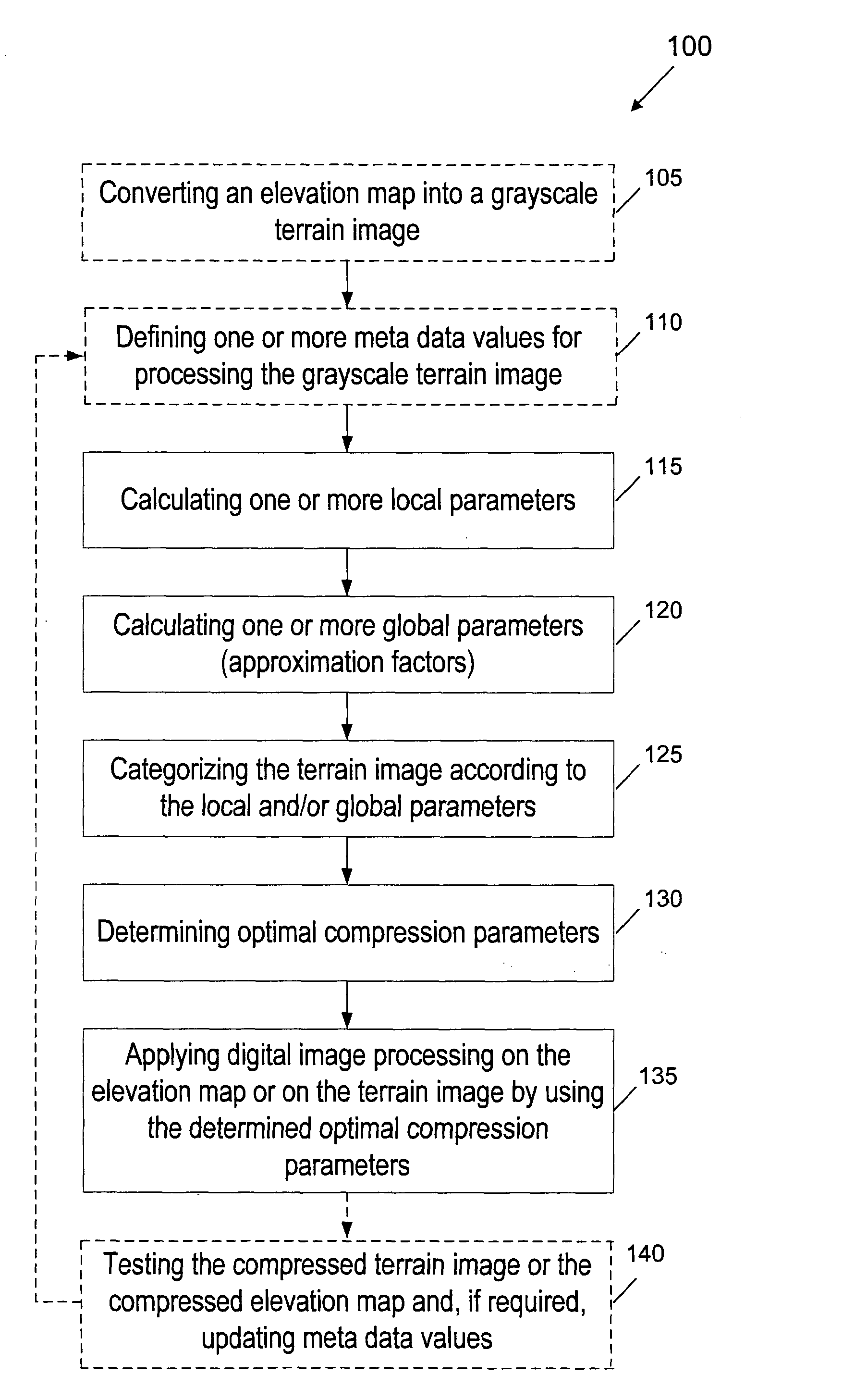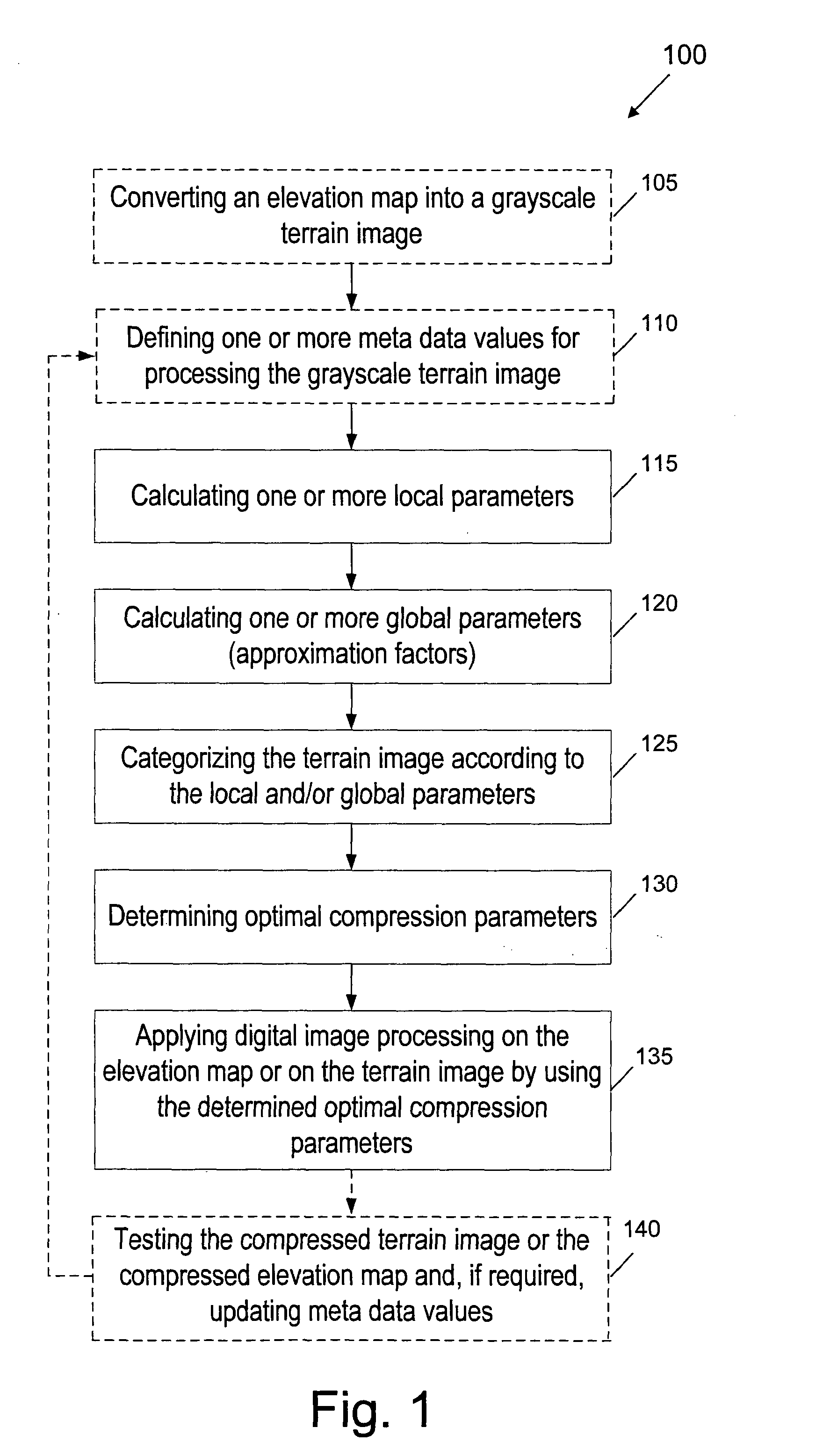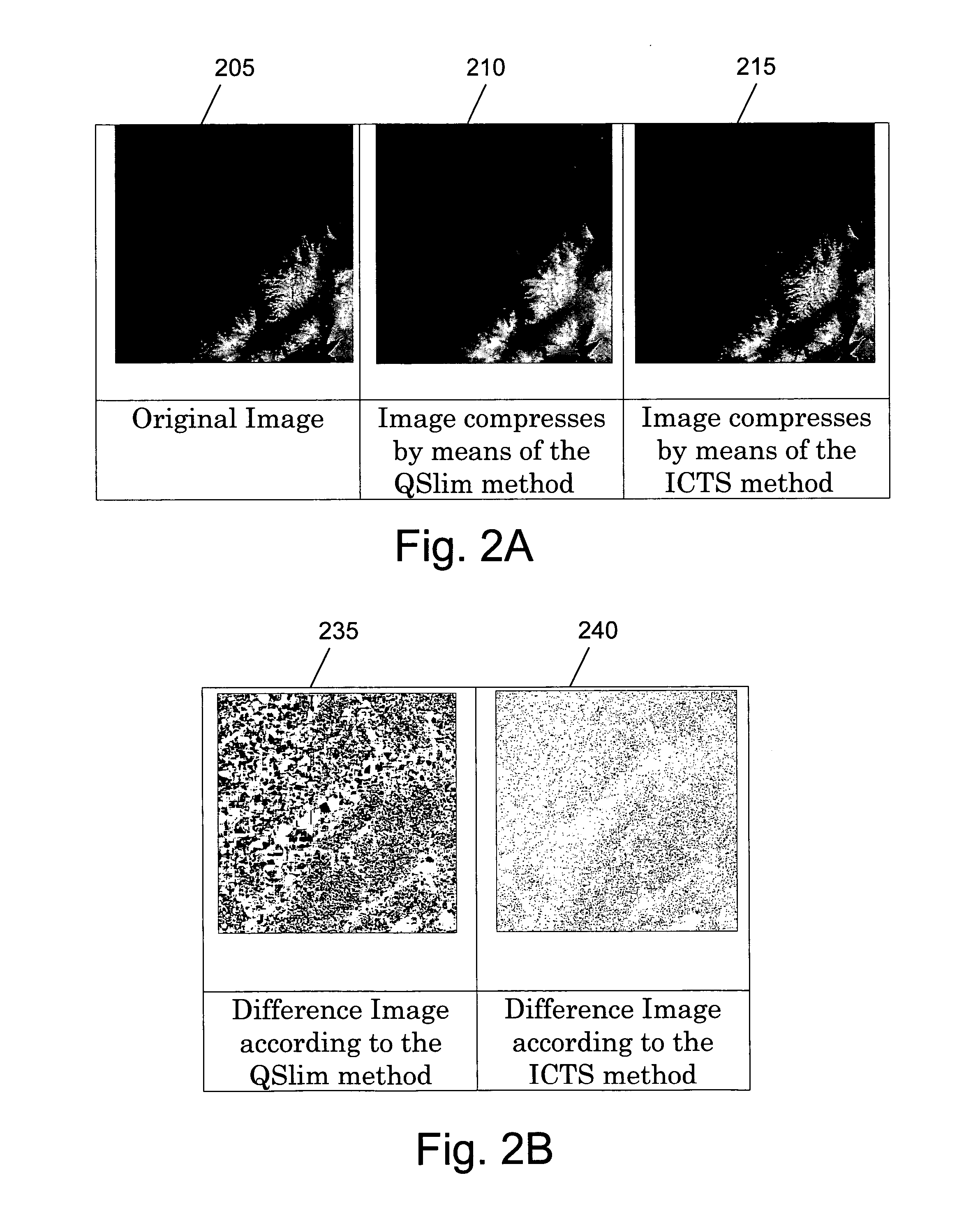Method for compressing elevation maps
a technology of elevation maps and compression methods, applied in the field of terrain simplification methods, can solve the problems of inability to compress multimedia data, inability to meet the requirements of data storage capacity and transmission bandwidth, and the demand for data storage capacity and data-transmission bandwidth continues to out-perform the capabilities of available technologies, so as to achieve high geometric quality, reduce the effect of labor intensity
- Summary
- Abstract
- Description
- Claims
- Application Information
AI Technical Summary
Benefits of technology
Problems solved by technology
Method used
Image
Examples
Embodiment Construction
[0038]FIG. 1 is a flow chart 100 of an image compression terrain simplification (ICTS) method for compressing elevation maps, according to a preferred embodiment of the present invention. The ICTS method comprises: (a) a preprocessing stage (steps 105 to 130) for converting an elevation map into a corresponding grayscale terrain image, and calculating local and global parameters of each terrain image, classifying (categorizing) each terrain image and, as a result, determining optimal compression parameters (such as quantization parameters) for compressing said image; and (b) a conventional digital image processing stage (step 135) for performing optimal compression of the terrain image, according to the determined optimal compression parameters. In addition, the compressed terrain image can be further tested (step 140) by a user, and if required, the compression parameters can be further updated.
[0039]It is supposed, for example, that an input for the ICTS method is a grid-based ele...
PUM
 Login to View More
Login to View More Abstract
Description
Claims
Application Information
 Login to View More
Login to View More - R&D
- Intellectual Property
- Life Sciences
- Materials
- Tech Scout
- Unparalleled Data Quality
- Higher Quality Content
- 60% Fewer Hallucinations
Browse by: Latest US Patents, China's latest patents, Technical Efficacy Thesaurus, Application Domain, Technology Topic, Popular Technical Reports.
© 2025 PatSnap. All rights reserved.Legal|Privacy policy|Modern Slavery Act Transparency Statement|Sitemap|About US| Contact US: help@patsnap.com



